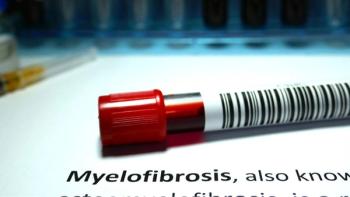
My Prophylactic Mastectomy Experience
My family history of breast cancer emphasized the need to take precautions seriously, especially in consideration of my two children.
Although this particular mutation comes with a “moderate” risk, as opposed to the ”high” risk associated with the BRCA 1 and 2 mutations, every woman in my family who is positive for the gene has developed breast cancer. I ultimately received the same news as Munn: with a family history like mine, a negative genetic test didn’t automatically make me low risk. I needed a full assessment.
Munn has not shared the specifics of her family history, but she does mention it as a factor that led to her classification as high risk. Other factors used in the Tyrer-Cuzick model — the risk calculator used by both Munn’s doctors and mine — include breast density, Ashkenazi Jewish heritage, age at menarche and menopause if applicable and biopsy history. The Centers for Disease Control and Prevention (CDC) defines high risk status as anybody with a calculated lifetime risk of higher than 20%. My own score was 31%, a little lower than Munn’s.
That’s where my story deviates from hers. I was lucky, not that I felt it at the time. My doctor gave me the options. I could begin high risk surveillance — imaging every six months — or I could undergo a prophylactic mastectomy (surgical removal of one or both breasts to reduce the risk of getting breast cancer). My decision was made before I left the exam room.
Due to my grandmother’s diagnosis and death in her early 30s, I had been having mammograms since I was 25. The long waits in chilly holding areas, the sticky sensation of pink polyester against my bare skin, and the dark little rooms where my breasts were clamped and prodded so hard they hurt for days afterwards, did nothing to calm my already rampant anxiety. I remember the faces of the other women still, the tight smiles we exchanged, acknowledging that we were all in this neat little hell together. My scans never revealed anything scarier than a few cysts and calcifications, all of them rated as “probably benign,” but all still requiring six monthly check-ins. I used to throw up before these appointments, convinced that this would be the time that something was found. I was always wrong. The news was always good. Still, I couldn’t go through that for the rest of my life — and I knew now that there was a chance I was carrying two ticking time bombs around on my chest. I had two children to think about. I scheduled the surgery.
The build-up to the surgery was the worst part, and the support communities I joined on social media were vital to me in the final few weeks. So many women shared the relief they felt when they woke up on the other side, and that was what kept me going. As it happened, the first thing I did after waking up was vomit. After I stopped, a nurse told me that my surgery had gone as planned. I had requested direct-to-implant surgery, as opposed to having expanders placed for several months before reconstruction, and my surgeon had been able to do it. I didn’t need to go back under the knife. All I had to do was recover. That part wasn’t easy: I couldn't lift my 1-year-old daughter for five weeks, or take a proper shower for ten days until my surgical drains were removed, but it was worth it. My post-surgery pathology report revealed a few tiny cellular changes in my left breast. It’s possible that I really did dodge a bullet. My chances of developing breast cancer are now down to less than 5%, and my anxiety is finally gone, replaced with relief.
I’m grateful to Olivia Munn for sharing her story. She’s given up her privacy to underscore this vital message: every single woman needs to know her risk and be able to make informed choices with the information she is given. I thought a clear genetic test meant I was safe; that isn’t always the case. I hope more women get the opportunity to take action before it’s too late.
Robin Davies is an LA-based writer with a background in TV. After supporting three immediate family members through cancer, she recently moved into the health and wellness space.
This post was written and submitted by Davies. The article reflects the views of Davies and not of CURE®. This is also not supposed to be intended as medical advice.
For more news on cancer updates, research and education, don’t forget to




